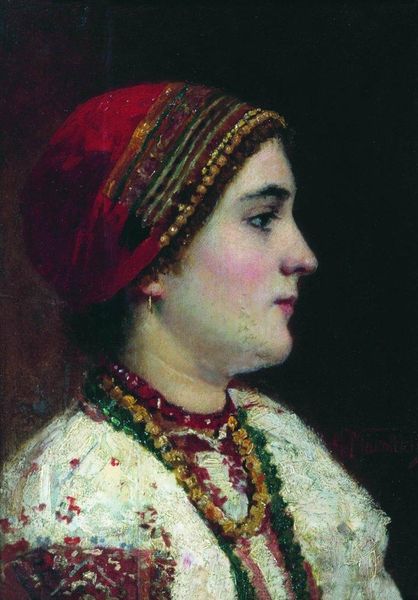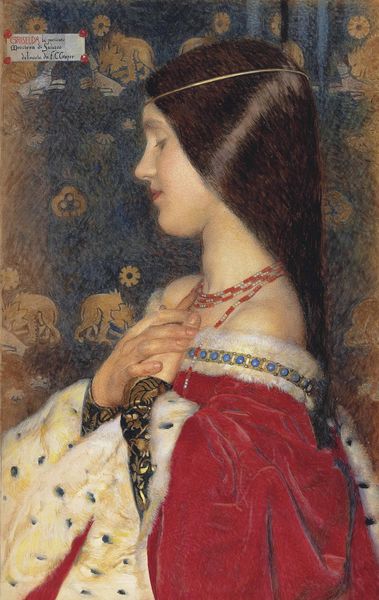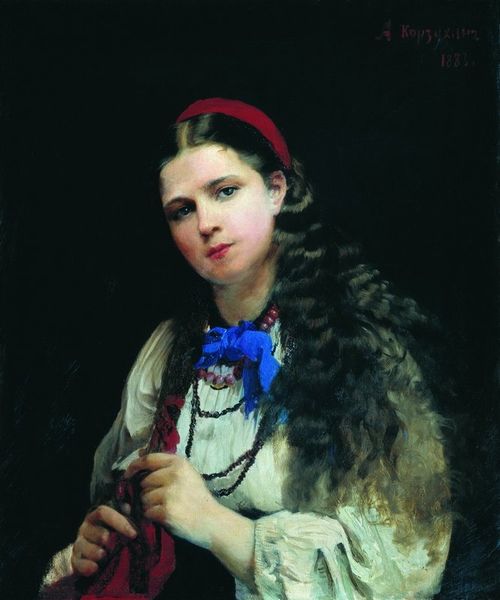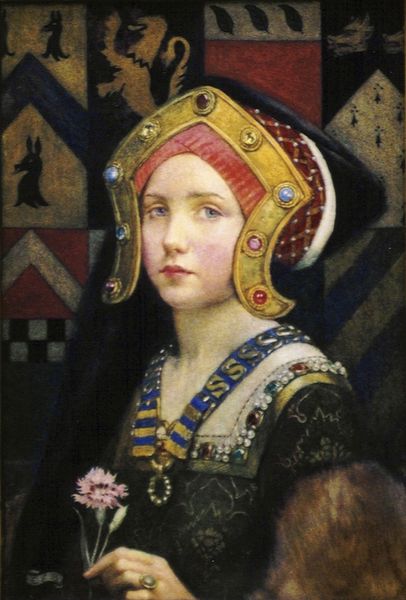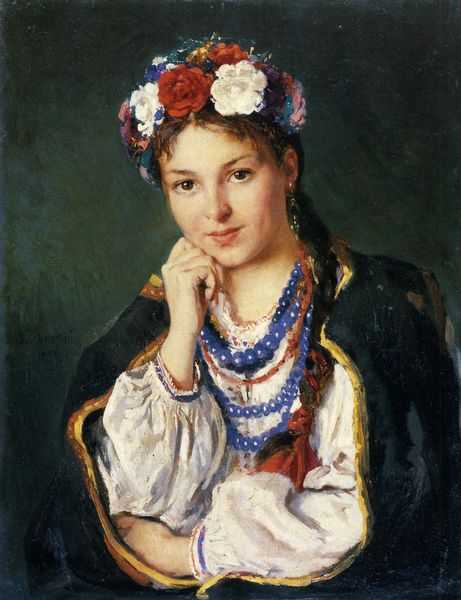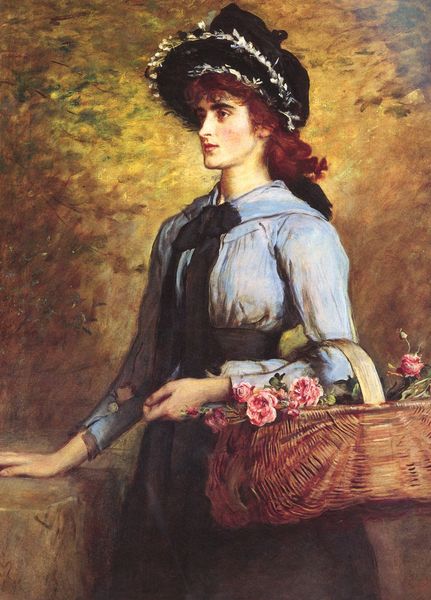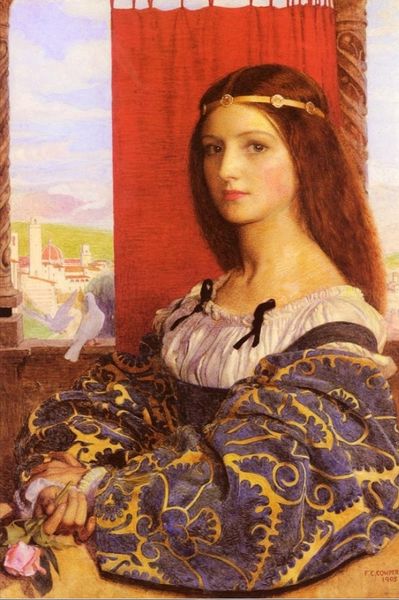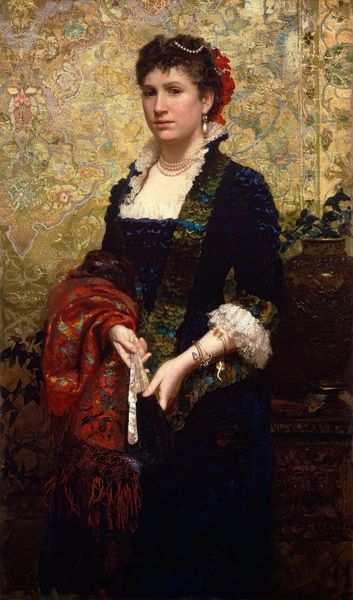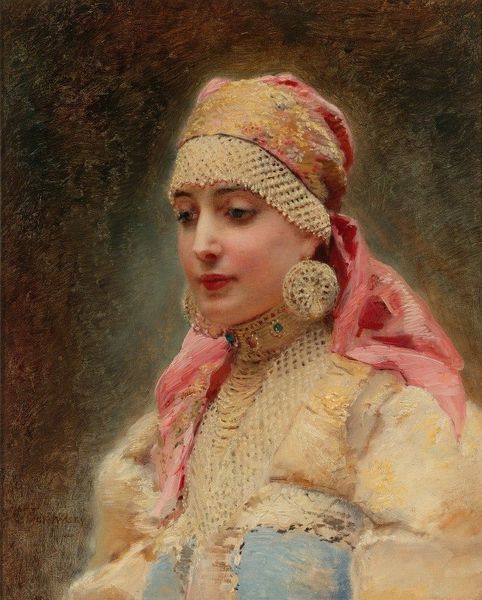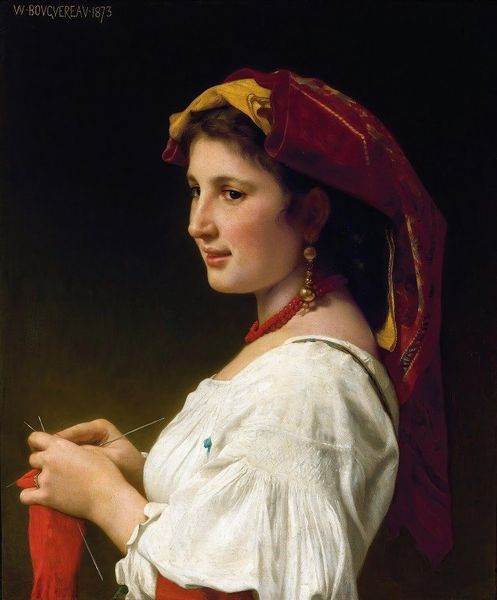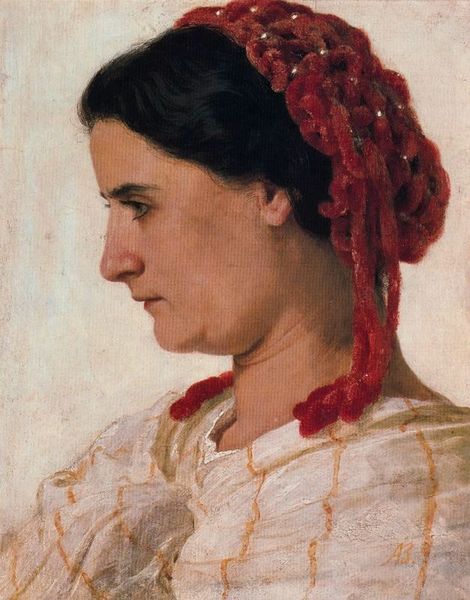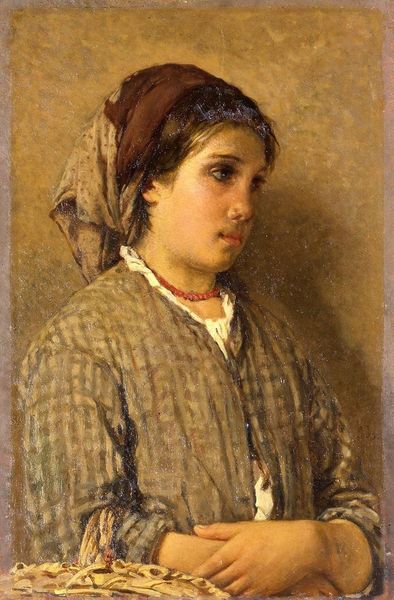
Copyright: Public domain
Editor: So, here we have William Holman Hunt’s "The Birthday (A Portrait Of The Artist's Wife, Edith)" from 1868, rendered in oil paint. I am immediately struck by the juxtaposition of meticulous detail and an almost dreamlike quality. What do you see in this piece, considering its context? Curator: It’s fascinating to consider this work through the lens of Pre-Raphaelite ideals and the socio-political climate of the time. Hunt, along with others in the Brotherhood, aimed to reform art by rejecting what they perceived as the mechanistic approaches first adopted by Mannerist artists who succeeded Raphael and Michelangelo. Hunt also used realism and historicism as his primary modes for commenting on social conditions. How does that tension between intimate portraiture and societal commentary manifest itself here? Editor: Well, the abundance of objects feels very symbolic—she’s holding a fan, keys, even a rose. They are painted so meticulously but also appear somewhat removed from reality, right? Almost staged? Curator: Precisely! These carefully selected objects are potent symbols, often connected to domesticity, status, and Victorian-era constructs of womanhood. This staging of womanhood occurred within a historical period deeply concerned with controlling female agency and reinforcing the roles of women as angelic homemakers and morally guiding wives. What does the contrast between the luxuriousness of her attire and her seemingly melancholic expression tell us? Editor: It highlights the complexities of being a woman in that era, confined to certain roles despite the trappings of wealth. There’s almost a quiet rebellion in her averted gaze. I now also see Hunt perhaps wasn’t *just* painting his wife, he was painting society! Curator: Indeed! Hunt created art that participated in public discussions. Considering how the image might have reinforced or challenged Victorian gender expectations gives us insight into Hunt's political position. Editor: This was fascinating. Thanks to your insight, it now appears to be a visual record of a pivotal point in Victorian England’s cultural debate. Curator: And to me, considering its relation to the artist’s personal life sheds light on how intimately connected societal forces were with private sentiment.
Comments
No comments
Be the first to comment and join the conversation on the ultimate creative platform.
